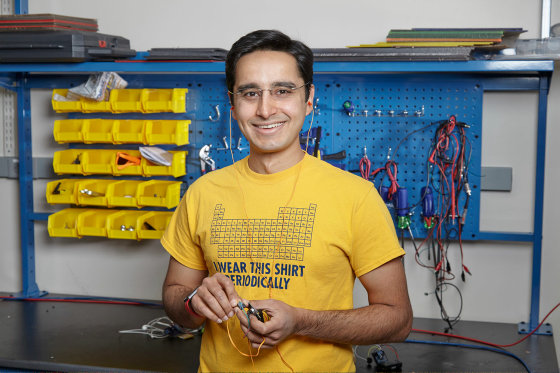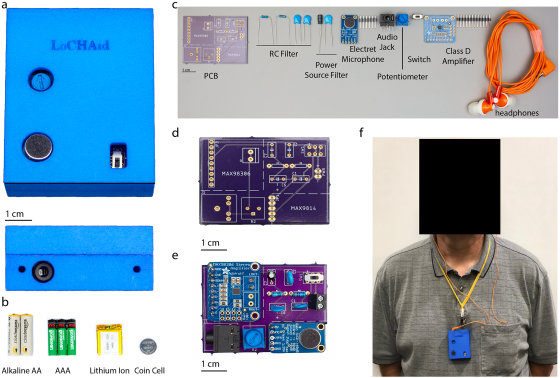A super-discount hearing aid that costs 100 yen is under development and has the potential to save hundreds of millions of people

An engineer who tried to give a hearing aid to his grandparents and realized that 'a good hearing aid is more expensive than a smartphone or laptop' is developing a cheap hearing aid that can be manufactured at a cost of $ 1 (about 105 yen). .. Although it has not yet reached the clinical trial stage, the commercialization of this hearing aid has the potential to save many people suffering from hearing loss, including those in developing countries.
LoCHAid: An ultra-low-cost hearing aid for age-related hearing loss
This $ 1 hearing aid could treat millions with hearing loss | Science | AAAS
https://www.sciencemag.org/news/2020/09/1-hearing-aid-could-treat-millions-hearing-loss
It is said that age-related hearing loss, such as 'it becomes difficult to hear high-pitched sounds,' makes it difficult to talk with people, isolates the elderly, and accelerates cognitive decline. There are 230 million people over the age of 65 with such hearing loss symptoms in the world, but hearing aids are a luxury item for people in developing countries, so it is difficult to reach out. ..
Saad Bhamla, an associate professor at Georgia Institute of Technology from Mumbai, India, also has a history of trying to give his grandparents a hearing aid but not being able to buy it due to lack of budget. A good quality hearing aid costs about $ 5,000, and a poor quality hearing aid costs $ 500, so it's almost treated as a 'luxury item' in developing countries. is.
So Bhamla has developed a new, inexpensive hearing aid that uses ready-made parts that are easy to get. Bhamla and colleagues first soldered a microphone to pick up ambient sound on a small board, and added an amplifier and frequency filter to make the treble louder. He also installed a volume adjustment, a power switch, an audio jack for using commercially available earphones, and a battery holder.
The man in the photo is Mr. Bhamla.

This matchbox-sized hearing aid was named 'LoCHAid'. Due to its small size, LoCHAid can be hung from the neck like a necklace. According to Bhamla, if it becomes possible to manufacture in large quantities, the cost per piece will be reduced to 1 dollar (about 105 yen).

Also, the advantage of LoCHAid is that anyone can make it by themselves because the method of making it is released for free on GitHub. If you make your own, it will take about 30 minutes and the cost will be 15 to 20 dollars (about 1600 to 2100 yen), but it is still cheap enough.
GitHub --bhamla-lab / LoCHAid-2020-PLOS-ONE: Files for low-cost hearing aid (LoCHAid) paper in PLOS ONE
https://github.com/bhamla-lab/LoCHAid-2020-PLOS-ONE

How to make it is also explained in the following movie.
SI Movie1 for Sinha et al. PLOS ONE 2020. Construction of the LoCHAid. --YouTube
According to Bhamla's test, LoCHAid was able to increase only the treble by about 15 decibels while keeping the bass at the same volume. LoCHAid has also been found to filter out loud, sudden sounds such as dog sounds. In addition, cochlear implant tests have shown potential for improved speech recognition, meeting five of the six WHO recommended hearing aid criteria.
However, LoCHAid is limited in that it cannot be tailored to the individual or used to treat any illness other than hearing loss. Researchers also say that although LoCHAid is waterproof and impact resistant, it deteriorates after a year and a half of use. The slightly larger size is also a drawback, but researchers are developing smaller versions of this.
And the big challenge for LoCHAid to commercialize is to pass clinical trials. In addition, people with hearing loss are unaware that they have hearing loss, or think that wearing a hearing aid is 'disgrace', so it is one of the challenges to spread hearing aids to people. thing. Researchers are working on the goal of making LoCHAid available in stores without a prescription, like reading glasses.
Related Posts:







